- Trip Outline
- Gallery
- Reviews
- Booking
- Overview
Interactive Sri Lanka Food tour
With the Global Food Tourism Conference around the corner, more and more people are starting to search for novel experiences in the food arena. If you one of the tourists or marketer, business owner heading to Sri Lanka, you may be searching for the additional fun experiences to do while you stay in Sri Lanka, such as Sri Lanka food tour, Sri Lanka whale watching trip, water sports.
There is no point in travelling to an exotic destination like Sri Lanka if you do not add something new to your life. A true devourer Does not travel to Sri Lanka to eat KFC or McDonalds or with the restaurants only with European cuisines-you want to test your limits! whether that means reaching the place you have already selected, or classic dish that makes you think twice before eating, a Sri Lanka food tour is a risk-free way to branch out.
Sri Lanka is a leading holiday destination in Asia with the vibrant and colourful ethnic blend. Cooking is an integral part of Sri Lankan culture, and a mixing pot of influences and heritages of different cultures around the world, for tourists there is a variety of cuisine to try during the holiday in Sri Lanka.
Important ingredients of most Sri Lankan cuisines are not native to Sri Lanka.
I wonder if you have ever been to a Sri Lankan kitchen in a village, in order to watch how Sri Lankan food is traditionally prepared. Scattered kitchen utensils made of iron, wood or leaves are a common sight in most Sri Lankan kitchen with baked clay pots in different sizes. Sri Lankan food usually being prepared using ingredients native to Sri Lanka and other South Asian countries such as India. Therefore you might feel the downgraded sharpness of chilli compared to Mexican chilli and lack starch in potatoes compared to potatoes coming from South America.
Rice and curry is the staple diet of Sri Lankan people and served for the breakfast, lunch and dinner as well. Even in every important occasion of Sri Lankan life, rice and curry take the centre stage of the food scene.
Hathmaluwa with rice is a meal eaten by most Sri Lankan families on the death anniversary of family members. The feast attended by a group of monks from then village Buddhist temple and this feast is organized as merit-making an activity for the families’ departed ancestor. Malabath which is another traditional dish of Sri Lankan people, which is the first meal prepared in Sri Lankan household after the demise of a family member is served for the attendees of the funeral, after cremation or burial.
None of these recipes includes cabbages, cauliflower, peas or carrots. But they are a delicious and healthy diet with a lot of vitamin, protein, starch and minerals. Most importantly the ingredients required to prepare these dishes can be found on the soil of Sri Lanka. Most importantly this type of dishes attached to traditional events inadvertently has been able to create a living memory of the island’s culinary history because these cuisines are prepared entirely using Sri Lankan ingredients and according to a Sri Lankan recipe that exists in the society for at least a millennium.
Colour and flavour of famous Sri Lankan red curry are coming from chilli (introduced by Portuguese), and the unique spicy flavour and colour of Chili paste and Sambol, some of the important ingredients that go into Sri Lankan cuisines are not native to Sri Lanka.
Tomatoes, carrot, potatoes, and peas, which are very common in contemporary Sri Lankan menus, arrived in the island during the Colonial era (1505 AD to 1948 AD). According to the historical information, potatoes were introduced to the island in the late 18’s by Dutch administration, primarily to feed other Europeans lived on the island with them. Today it is served in many forms such as boiled potatoes, baked, stuffed and fried potatoes.
It is believed that Chili was introduced to the island from Mexico during the Portuguese colonial era by Vasco de Gama. Today it is vastly produced throughout the island because the weather in the island is very suitable to grow this pungent spice, in fact, it is a good alternative to expensive native pepper, which needs a lot of rain than chilli to grow.
It seems that tomatoes are also making a big impact on the modern Sri Lankan culinary arena. All Sri Lankan cuisines have adopted tomatoes. Tomatoes arrived in the island through a circuitous route presumably from South America to Europe, and then to England and finally to Sri Lanka in the 16’s courtesy of British. Most curry verities such as Red curry have been popularized in the island by most local hotels and restaurants during the last 100 years and meat and fish dishes are coming with red curry sauce.
As foreign invaders, traders have come and gone, Sri Lankan kitchen has considerably changed in the past 1000 years. In most households in the island, older recipes’ prepared using local ingredients that represent Sri Lanka culture now co-exist with foreign influence from halfway across the globe. For instance, a Sri Lankan meal may include rice and curry with rasam (a thin soup made of ingredients like pepper, cumin, coriander seeds), but also served with a spicy version of stir-fried potatoes.
Most Sri Lankan food served in Sri Lankan restaurants does not show the characteristics of true indigenous dishes; however, most Sri Lankan households keep many traditional recipes handed down for generations. Sri Lankan domestic kitchen has been able to maintain the balance of older spices even with newer ingredients and showcase the nuances of the traditional culinary culture of Sri Lankan family.
Cooking class in Habarana
Cooking class in Habarana is a popular activity among the most tourists, who visit the prominent places of the Cultural Triangle of Sri Lanka. Habarana is a small town let with a laid-back way of life between Sigiriya and Polonnaruwa. You can go on a short cooking tour that includes stops at the village school, temple, village tank, farmhouses, visit local vendors and producers and finally the cooking lesson at your guide’s home. Rice, sambol, Chili paste, rotis, and curry are several items you can try your hand at the cooking class.
Cooking with spices
Spices are an essential item for the most variety of dishes in the island of Sri Lanka, as the name suggests these cooking classes are essentially accompanied by a wide range of spices during the action. These cuisine classes are held at spice gardens, mostly in Matale and suburbs, where the spices and herbs grow in plenty. The cooking lesson includes the ingredients and steps required to replicate typical Sri Lankan spicy dishes. The cooking class is not only limited to prepare a delicious cuisine but also a comprehensive description and demonstration of how to prepare different spices and usage of spices in the Sri Lankan kitchen. Popular lessons include learning the usage of spices in other areas such as ancient healing method known as “Ayurveda” too.
Cooking classes in the colonial city of Galle
One distinct feature of Sri Lankan kitchen is the influence of different cultures such as Dutch, Portuguese, English and Arabian. Dutch, Portuguese and English introduced their native culinary pattern as they were occupying the maritime region of the island. Hand down of Arabian styled cuisine is resulted due to their mingling with the local community in the 15’s. This cooking class in Galle offers a fun way to learn the variety of dishes such as string hoppers, kokis, aasmi that are of colonial influence.
A taste of urban cooking
A taste of urban cooking is essentially for tourists, who go on full-day township tours to places such as Colombo and Kandy; during the city tour, the visitors can learn the preparation of fun local favourite food items such as Kottu and hoppers. However, this would be an interesting cooking experience for tourists. Unlike the above-motioned cooking classes, where you learn to cook then get hands-on experience by preparing the tasty meals for the customers.
The above-mentioned cooking classes can only be organised with advance booking. These culinary tours include many other activities such as visiting national parks, birding, visiting archaeological sites, white water rafting and time to relax on the beach. The tour can be customised as per the individual taste and the tour is always an individual tour. Please write to us at info@seerendipitytours.com for more information.
Interactive Sri Lanka Food tour Galle
The main reason for travellers to take part in our Sri Lanka Food tour Galle is the love for food. After all, that's why a large number of travellers ask for a Sri Lanka food tour. A large number of our guests, who book Sri Lanka food tour with us are well aware of Sri Lank's popularity as a country for seafood and you will not leave the island without trying some of the best seafood in the world. Yes, indeed you must have done your research and find out what Sri Lanka's strength as a destination for food-loving travellers. Seafood, Spices, herbs and multicultural know-how are the most noteworthy reasons for Sri Lanka's popularity as a foodie destination in Asia.
In this Sri Lanka food tour, you learn to prepare rice and curry in Sri Lankan way with Sri Lankan chef, afterwards share the hearty dinner prepared after classical Sri Lankan recipe that you prepared yourself. All great Sri Lankan food starts with fresh spices and other fresh ingredients, and you'll start this 7-8 hour Sri Lanka food tour with cooking class and a guided tour of southern Sri Lanka. You will meet the chef in Galle city and he will accompany you to the Galle market and buy fresh items required in your Sri Lankan food tour before heading to the teaching kitchen. This Sri Lankan Food tour with hand-on Sri Lankan cooking experience includes snacks, dinner with drinks the tour wind up with several recipes to take back to your personal kitchen.
What You Can Expect on this Sri Lanka food tour
Meet our guide cum driver near Colombo (pick up location is flexible), then start with the sightseeing tour of southern Sri Lanka. You will visit places such as mask museum, Bentota beach, Hikkaduwa beach you also have the opportunity to explore the Madu river wetland with a 2 hours Madu river safari and later meet the chef in Galle.
Before you head to the kitchen you have the opportunity to explore the Galle fortress too, which is one of the important tourist attractions in Sri Lanka and the most popular landmark in southern Sri Lanka. Galle fortress is a UNESCO world heritage site due to its importance as a historical site to the world. Galle fortress is the best preserved Dutch fort in Asia. Then start with the basic Sri Lanka traditional cuisine, collect fresh vegetables and seafood from the local market.
After collecting the necessary ingredients drive to the kitchen, where you will find an open kitchen and restaurant. Pour your first glass of Arrack for the evening, then prepare several curries and rice, classic Sri Lanka dinner that is perfectly paired with arrack.
With the chef making the dinner alongside you, begin to prepare the traditional Rotty, then bake the Rotty on a heated plate, you can learn how to make the rice and curry here. Then the Rotty rice and curry is done, is done, sit down to the meal that you contributed to preparing, savouring the tasty seafood and rice (non-sea food as well as vegetarian food also available on request).
Price per person for the Sri Lanka food tour (Galle) $165
Basic Itinerary of Sri Lanka food tour:
7:30 - 8:00 am Hotel Pickups from Colombo
8:45 am Sea turtle conservation centre/ Sightseeing
9:30 am Boat safari at Madu river estuary
11:30 am Arrive Galle and sightseeing tour of Galle Fort
12:00 pm starts with the cooking class
2:30 pm Depart for Colombo
4:30 - 5:00 pm Arrive back in Colombo
Inclusions
Entire ground transportation, all entrance fees for the sites and attractions, English speaking tour guide, cooking class with Lunch, arrival departure transfers, all government taxes.
Interactive Sri Lanka Food tour
With the Global Food Tourism Conference around the corner, more and more people are starting to search for novel experiences in the food arena. If you one of the tourists or marketer, business owner heading to Sri Lanka, you may be searching for the additional fun experiences to do while you stay in Sri Lanka, such as Sri Lanka food tour, Sri Lanka whale watching trip, water sports. There is no point in travelling to an exotic destination like Sri Lanka if you do not add something new to your life. A true devourer Does not travel to Sri Lanka to eat KFC or McDonalds or with the restaurants only with European cuisines-you want to test your limits! whether that means reaching the place you have already selected, or classic dish that makes you think twice before eating, a Sri Lanka food tour is a risk-free way to branch out. Sri Lanka is a leading holiday destination in Asia with the vibrant and colourful ethnic blend. Cooking is an integral part of Sri Lankan culture, and a mixing pot of influences and heritages of different cultures around the world, for tourists there is a variety of cuisine to try during the holiday in Sri Lanka.Important ingredients of most Sri Lankan cuisines are not native to Sri Lanka.
I wonder if you have ever been to a Sri Lankan kitchen in a village, in order to watch how Sri Lankan food is traditionally prepared. Scattered kitchen utensils made of iron, wood or leaves are a common sight in most Sri Lankan kitchen with baked clay pots in different sizes. Sri Lankan food usually being prepared using ingredients native to Sri Lanka and other South Asian countries such as India. Therefore you might feel the downgraded sharpness of chilli compared to Mexican chilli and lack starch in potatoes compared to potatoes coming from South America. Rice and curry is the staple diet of Sri Lankan people and served for the breakfast, lunch and dinner as well. Even in every important occasion of Sri Lankan life, rice and curry take the centre stage of the food scene. Hathmaluwa with rice is a meal eaten by most Sri Lankan families on the death anniversary of family members. The feast attended by a group of monks from then village Buddhist temple and this feast is organized as merit-making an activity for the families’ departed ancestor. Malabath which is another traditional dish of Sri Lankan people, which is the first meal prepared in Sri Lankan household after the demise of a family member is served for the attendees of the funeral, after cremation or burial. None of these recipes includes cabbages, cauliflower, peas or carrots. But they are a delicious and healthy diet with a lot of vitamin, protein, starch and minerals. Most importantly the ingredients required to prepare these dishes can be found on the soil of Sri Lanka. Most importantly this type of dishes attached to traditional events inadvertently has been able to create a living memory of the island’s culinary history because these cuisines are prepared entirely using Sri Lankan ingredients and according to a Sri Lankan recipe that exists in the society for at least a millennium. Colour and flavour of famous Sri Lankan red curry are coming from chilli (introduced by Portuguese), and the unique spicy flavour and colour of Chili paste and Sambol, some of the important ingredients that go into Sri Lankan cuisines are not native to Sri Lanka. Tomatoes, carrot, potatoes, and peas, which are very common in contemporary Sri Lankan menus, arrived in the island during the Colonial era (1505 AD to 1948 AD). According to the historical information, potatoes were introduced to the island in the late 18’s by Dutch administration, primarily to feed other Europeans lived on the island with them. Today it is served in many forms such as boiled potatoes, baked, stuffed and fried potatoes. It is believed that Chili was introduced to the island from Mexico during the Portuguese colonial era by Vasco de Gama. Today it is vastly produced throughout the island because the weather in the island is very suitable to grow this pungent spice, in fact, it is a good alternative to expensive native pepper, which needs a lot of rain than chilli to grow. It seems that tomatoes are also making a big impact on the modern Sri Lankan culinary arena. All Sri Lankan cuisines have adopted tomatoes. Tomatoes arrived in the island through a circuitous route presumably from South America to Europe, and then to England and finally to Sri Lanka in the 16’s courtesy of British. Most curry verities such as Red curry have been popularized in the island by most local hotels and restaurants during the last 100 years and meat and fish dishes are coming with red curry sauce. As foreign invaders, traders have come and gone, Sri Lankan kitchen has considerably changed in the past 1000 years. In most households in the island, older recipes’ prepared using local ingredients that represent Sri Lanka culture now co-exist with foreign influence from halfway across the globe. For instance, a Sri Lankan meal may include rice and curry with rasam (a thin soup made of ingredients like pepper, cumin, coriander seeds), but also served with a spicy version of stir-fried potatoes. Most Sri Lankan food served in Sri Lankan restaurants does not show the characteristics of true indigenous dishes; however, most Sri Lankan households keep many traditional recipes handed down for generations. Sri Lankan domestic kitchen has been able to maintain the balance of older spices even with newer ingredients and showcase the nuances of the traditional culinary culture of Sri Lankan family.Cooking class in Habarana
Cooking class in Habarana is a popular activity among the most tourists, who visit the prominent places of the Cultural Triangle of Sri Lanka. Habarana is a small town let with a laid-back way of life between Sigiriya and Polonnaruwa. You can go on a short cooking tour that includes stops at the village school, temple, village tank, farmhouses, visit local vendors and producers and finally the cooking lesson at your guide’s home. Rice, sambol, Chili paste, rotis, and curry are several items you can try your hand at the cooking class.Cooking with spices
Spices are an essential item for the most variety of dishes in the island of Sri Lanka, as the name suggests these cooking classes are essentially accompanied by a wide range of spices during the action. These cuisine classes are held at spice gardens, mostly in Matale and suburbs, where the spices and herbs grow in plenty. The cooking lesson includes the ingredients and steps required to replicate typical Sri Lankan spicy dishes. The cooking class is not only limited to prepare a delicious cuisine but also a comprehensive description and demonstration of how to prepare different spices and usage of spices in the Sri Lankan kitchen. Popular lessons include learning the usage of spices in other areas such as ancient healing method known as “Ayurveda” too.Cooking classes in the colonial city of Galle
One distinct feature of Sri Lankan kitchen is the influence of different cultures such as Dutch, Portuguese, English and Arabian. Dutch, Portuguese and English introduced their native culinary pattern as they were occupying the maritime region of the island. Hand down of Arabian styled cuisine is resulted due to their mingling with the local community in the 15’s. This cooking class in Galle offers a fun way to learn the variety of dishes such as string hoppers, kokis, aasmi that are of colonial influence.A taste of urban cooking
A taste of urban cooking is essentially for tourists, who go on full-day township tours to places such as Colombo and Kandy; during the city tour, the visitors can learn the preparation of fun local favourite food items such as Kottu and hoppers. However, this would be an interesting cooking experience for tourists. Unlike the above-motioned cooking classes, where you learn to cook then get hands-on experience by preparing the tasty meals for the customers. The above-mentioned cooking classes can only be organised with advance booking. These culinary tours include many other activities such as visiting national parks, birding, visiting archaeological sites, white water rafting and time to relax on the beach. The tour can be customised as per the individual taste and the tour is always an individual tour. Please write to us at info@seerendipitytours.com for more information.Interactive Sri Lanka Food tour Galle
The main reason for travellers to take part in our Sri Lanka Food tour Galle is the love for food. After all, that's why a large number of travellers ask for a Sri Lanka food tour. A large number of our guests, who book Sri Lanka food tour with us are well aware of Sri Lank's popularity as a country for seafood and you will not leave the island without trying some of the best seafood in the world. Yes, indeed you must have done your research and find out what Sri Lanka's strength as a destination for food-loving travellers. Seafood, Spices, herbs and multicultural know-how are the most noteworthy reasons for Sri Lanka's popularity as a foodie destination in Asia. In this Sri Lanka food tour, you learn to prepare rice and curry in Sri Lankan way with Sri Lankan chef, afterwards share the hearty dinner prepared after classical Sri Lankan recipe that you prepared yourself. All great Sri Lankan food starts with fresh spices and other fresh ingredients, and you'll start this 7-8 hour Sri Lanka food tour with cooking class and a guided tour of southern Sri Lanka. You will meet the chef in Galle city and he will accompany you to the Galle market and buy fresh items required in your Sri Lankan food tour before heading to the teaching kitchen. This Sri Lankan Food tour with hand-on Sri Lankan cooking experience includes snacks, dinner with drinks the tour wind up with several recipes to take back to your personal kitchen.What You Can Expect on this Sri Lanka food tour
Meet our guide cum driver near Colombo (pick up location is flexible), then start with the sightseeing tour of southern Sri Lanka. You will visit places such as mask museum, Bentota beach, Hikkaduwa beach you also have the opportunity to explore the Madu river wetland with a 2 hours Madu river safari and later meet the chef in Galle.
Before you head to the kitchen you have the opportunity to explore the Galle fortress too, which is one of the important tourist attractions in Sri Lanka and the most popular landmark in southern Sri Lanka. Galle fortress is a UNESCO world heritage site due to its importance as a historical site to the world. Galle fortress is the best preserved Dutch fort in Asia. Then start with the basic Sri Lanka traditional cuisine, collect fresh vegetables and seafood from the local market.
After collecting the necessary ingredients drive to the kitchen, where you will find an open kitchen and restaurant. Pour your first glass of Arrack for the evening, then prepare several curries and rice, classic Sri Lanka dinner that is perfectly paired with arrack.
With the chef making the dinner alongside you, begin to prepare the traditional Rotty, then bake the Rotty on a heated plate, you can learn how to make the rice and curry here. Then the Rotty rice and curry is done, is done, sit down to the meal that you contributed to preparing, savouring the tasty seafood and rice (non-sea food as well as vegetarian food also available on request).

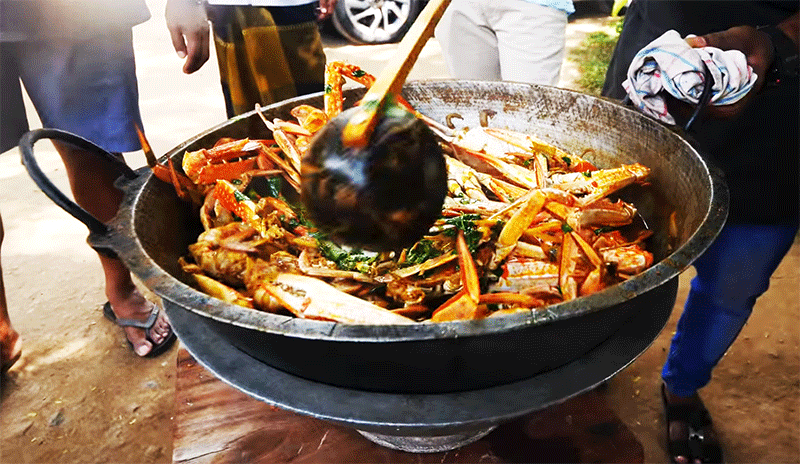

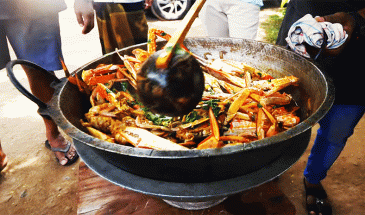
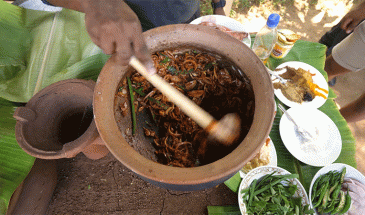
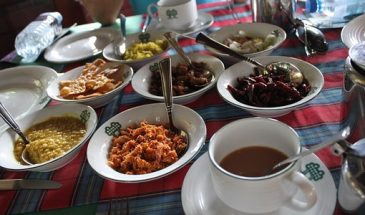
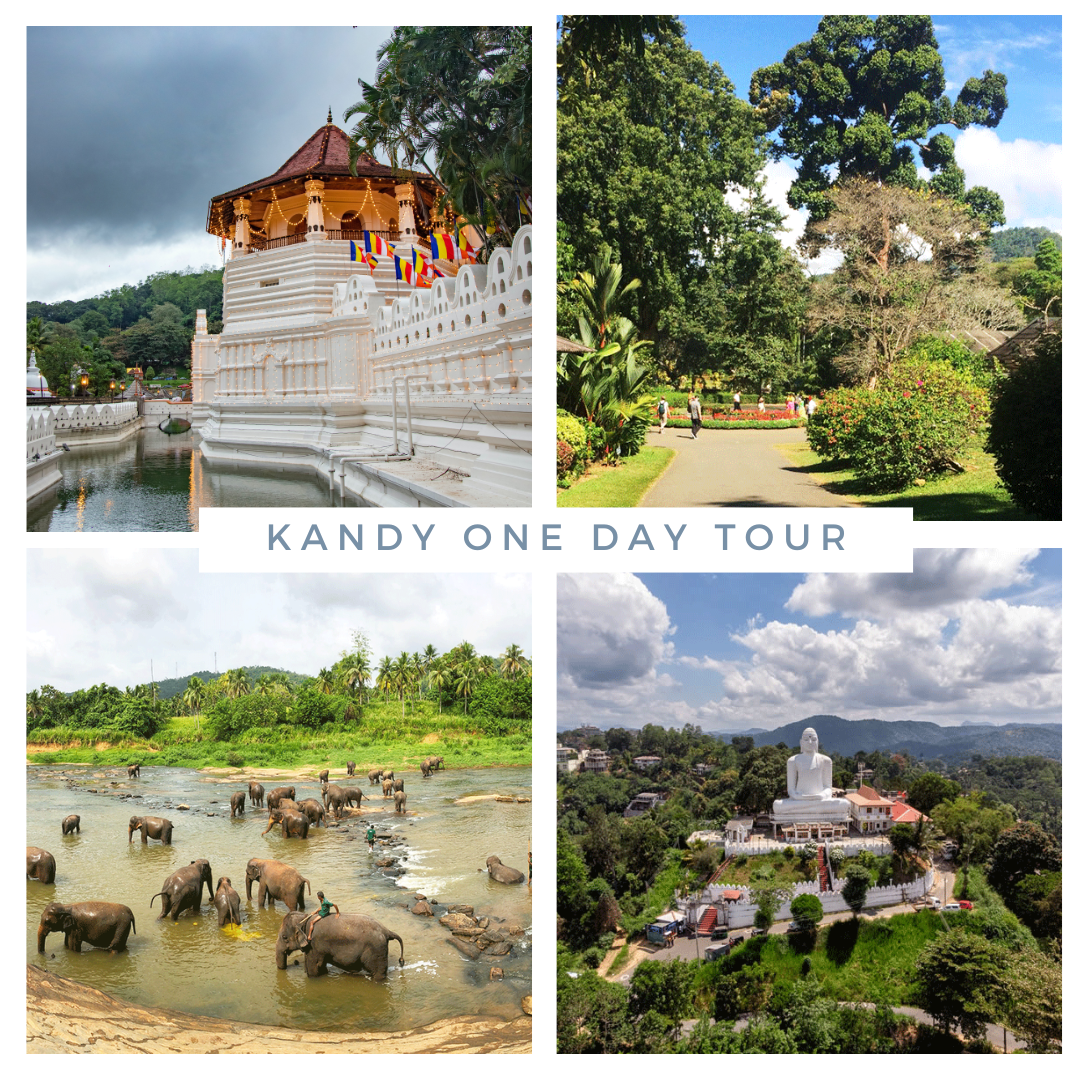
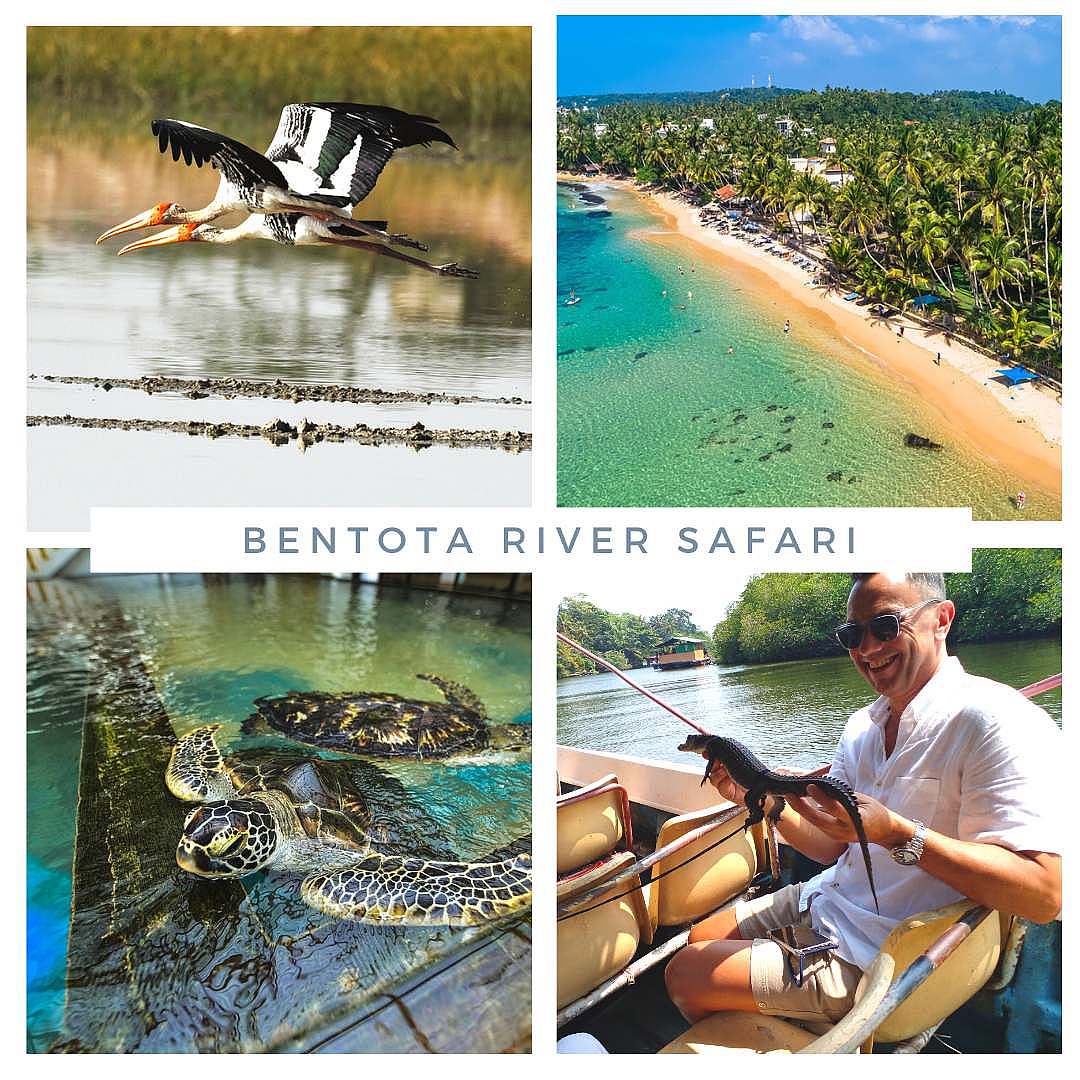

There are no reviews yet.